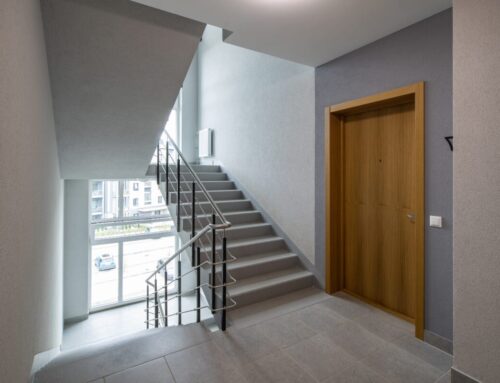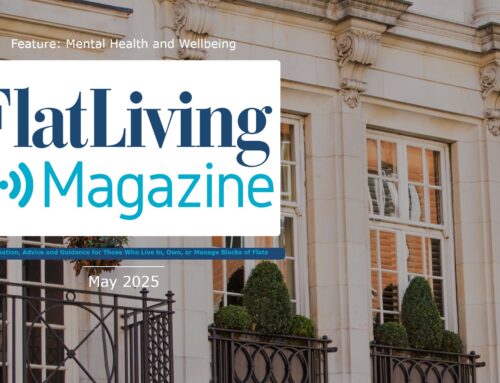Belinda Bagnall, Managing Director of Residentsline, explains the difference between Right to Manage and buying your freehold.

The terms leasehold, freehold, collective enfranchisement and right to manage can be confusing, especially if you’re not a property industry professional; just a leaseholder looking to gain some control over how your block is managed.
Here we’ll be clearing up the confusion with an explanation of the differences between enacting your Right to Manage and buying your freehold through Collective Enfranchisement.
What is the Right to Manage?
The Right to Manage is part of the Commonhold and Leasehold Reform Act 2002. It allows qualifying leaseholders to collectively transfer the freeholder/landlord’s management responsibilities to a company, set up by them, known as the RTM Company.
The landlord does not need to consent, and nothing needs to go through the courts for the right to be enforced. The leaseholders don’t need to prove mismanagement by the landlord- the right is available regardless.
To qualify, the building must be made up of individual flats; at least two thirds of which must be leasehold. The leasehold flats must have had a lease of more than 21 years when they were granted. Additionally, at least 75% of the building must be residential and, if there are less than 4 flats in the block, the landlord must live elsewhere (unless the block was purpose-built).
Any number of leaseholders can set up an RTM company, but at least 50% of the flats in the building will have to be members of the company before the RTM can actually take over management. All qualifying leaseholders will be allowed to become members of the RTM company with no exceptions. No one can be refused, and the landlord is automatically invited to become a member of the company too.
Buying Your Freehold
Collective Enfranchisement provides leaseholders of flats within a building the right to come together to purchase the freehold of the building as per the Leasehold Reform Housing & Urban Development Act 1993.
Where at least 50% of the building’s qualifying leaseholders come together (and if the building itself qualifies), then the existing freeholder can’t actually refuse.
For the building to qualify it must consist of at least two flats and at least two thirds of the flats must be owned by qualifying tenants.
The building will not qualify if:
- More than 25% of the internal floor area of the building (excluding any common areas), is neither used nor intended to be used for residential purposes (garages and parking spaces specifically used by flats in the building will be classed as residential)
- The building is a conversion into four or fewer flats and is not a purpose-built block
- The building has had the same freeholder since before the conversion into flats
- The building has been occupied by the freeholder or an adult member of his family for the past 12 months
Other buildings are excluded from qualifying if they:
- Fall within a cathedral precinct
- Are National Trust properties
- Include any track of an operational railway (including a bridge, tunnel or retaining wall to a railway track)
- Are Crown properties
For the tenants to qualify, they must be leaseholder who’s:
- Lease was at least 21 years long when it was first granted or, less commonly;
- The owner of a shorter lease that contains a perpetual renewal clause
- The owner of a lease that contains a ‘Prince of Wales’ clause meaning it is terminable on death, marriage or an unknown date
- The owner of a lease granted under the Local Government Housing Act 1989 following the expiry of the original term
- The owner of a 100% share of a shared ownership lease
- A lease granted under the ‘right to buy’ or ‘right to acquire on rent to mortgage terms’.
If any of the following scenarios apply, even if the above criteria are satisfied, the leaseholder will not qualify:
- The freeholder is a Charitable Housing Trust and the flat is provided as part of it’s functions
- The leaseholder owns more than two flats in the building (either jointly or solely)
- The leaseholder has a business or commercial lease.
Once you have established that the building and tenants qualify, you must make sure that at least 50% of the building’s leaseholders are participating e.g. if there are ten flats, at least 5 of the flats owned by qualifying leaseholders must be participating. If there are only two flats in the building, both leaseholders must qualify and participate.
So, What Are the Key Differences?
Obtaining RTM simply relieves the landlord of their responsibility to manage the block. The RTM company takes on all these responsibilities and are legally obligated to fulfil their responsibilities in line with the lease. This includes maintenance, insurance, health and safety compliance, service charge collection and budgeting… the list goes on.
What an RTM company doesn’t have, is ownership of the building or the land it’s built on. That freehold ownership remains with the landlord. The landlord also still has a say in how the block in managed as they are also part of the company.
When buying the freehold of a block, the leaseholders become the outright owners of the block with full control over how it’s managed.
What Are the Pros and Cons of Exercising Your Right to Manage?
Pro: The RTM company assumes full control of all expenses which can result in more affordable service charges for all residents.
Con: RTM companies rely on their members to volunteer their time, and it takes a lot of time and commitment to run a block successfully. Not all members will continuously pull their weight.
Pro: Right to Manage also allows residents to choose their own contractors through a property management company, which could result in higher quality work at a more affordable price.
Con: Exercising your RTM can result in a strained relationship with the landlord. They remain the freeholder and they have to be consulted re any major works to the building. If your thoughts don’t align, there can be trouble.
Pro: RTM companies guarantee fairness in decision-making as all leaseholders have the same voting power.
Con: As part of an RTM company, you leave yourself open to criticism from other leaseholders who don’t support the decisions being made or who didn’t want an RTM company to be formed in the first place.
Pro: You’ll need to cover any expenses incurred by the landlord during the takeover process, but they can’t claim any compensation as you are simply exercising a right.
Con: You’ll need to handle some sticky situations with your neighbours including chasing service charge payments and enforcing the terms of their lease.
What Are the Pros and Cons of Buying Your Freehold?
Pro: You Have Full Control Over the Management of Your Building
The management of the building is now down to you- a comforting thought for those struggling with their previous managing agent or landlord. You can decide to self-manage or appoint your own managing agent who is accountable to you.
Con: You Have Full Control Over the Management of Your Building!
The amount of responsibility and legislation can be overwhelming for some. Of course, you can appoint a managing agent but, as company director, the buck ultimately stops with you and you must ensure the managing agent is working within the law and utilising best practise.
Pro: You Can Maintain the Length of Leases
As leases become shorter and shorter, the value of properties decreases- sometimes to the point of being unsaleable if mortgage providers decide they can’t loan against a unit due to the falling value and their perceived risk.
Owning the freehold of your property means you can extend leases to 999 years at the same time as having more control over modernising the existing small print- increasing their value and making properties far more attractive to lenders. You’ll also avoid the fees involved in extending your own lease.
Con: You’ll Be Dealing with Your Neighbours on a Whole New Level
From disputes between co-freeholders to chasing late payers among your lease-holding neighbours, you must be confident in your abilities to communicate on all levels and remain clear and authoritative while maintaining important relationships.
Pro: You’ll no longer need to pay ground rent
Con: You’ll have to collect ground rent and service charges from your lease-holding neighbours.
Pro: You’ll have full control over the contractors permitted to carry out works, resulting in potentially better outcomes and lower spends.
Con: The Enfranchisement Process Can Be Challenging and Costly
The formal process can be an organisational headache (involving many stakeholders and statutory requirements) as well as an expensive one involving loans, mortgages and fees for solicitors and valuers.
Is Either Option Better?
In a word, no. Each option has its merits depending on the level of control you’d like to have as well as how much you’d like to invest financially and timewise.
Either way, you’re taking on huge amounts of responsibility and much be absolutely clear on what’s involved and what will be expected of you before moving forward.
Head to the Residentsline website for information on all of our products and services or, if you’d like to speak to one of our fantastic, specialist team, give us a call on 0800 281 235.




Leave A Comment